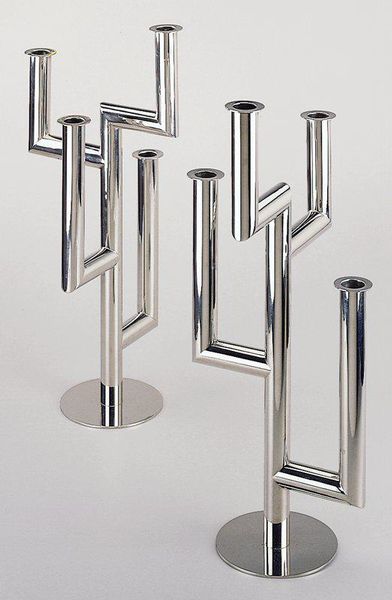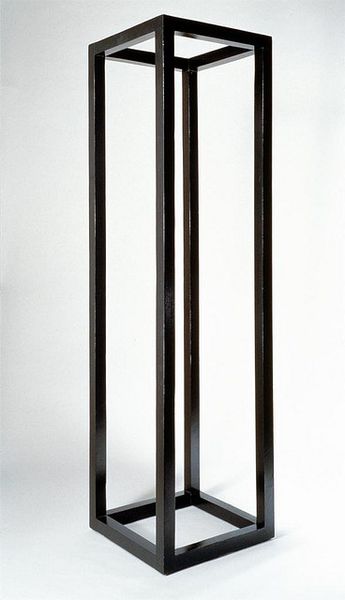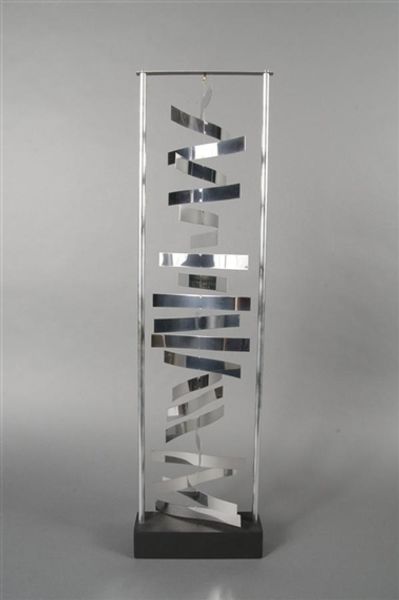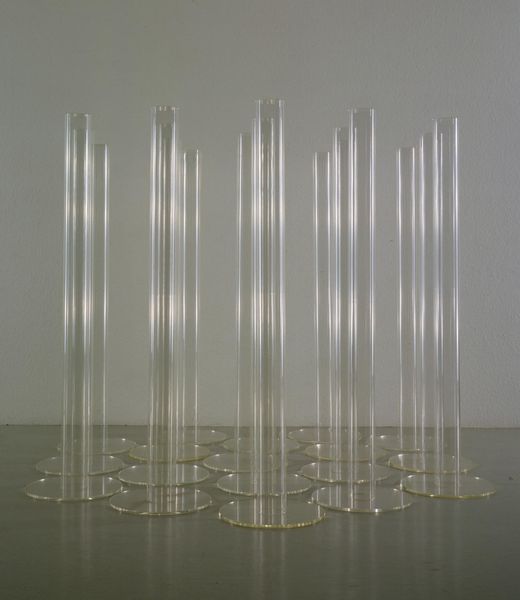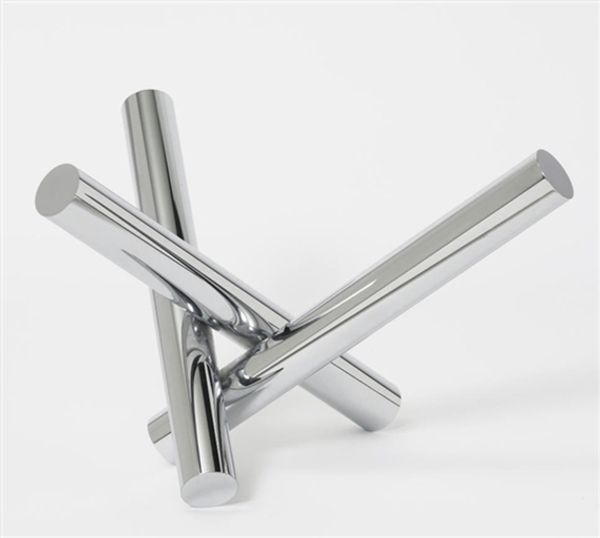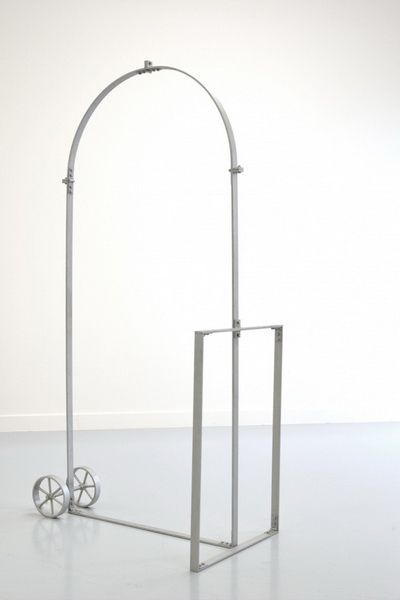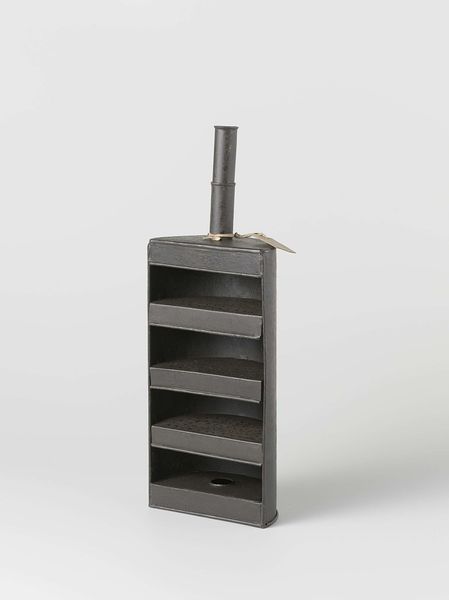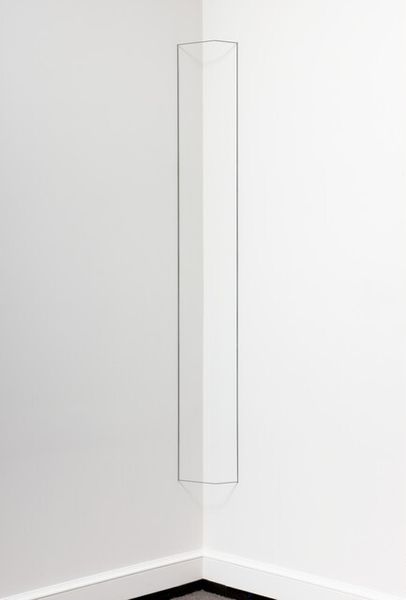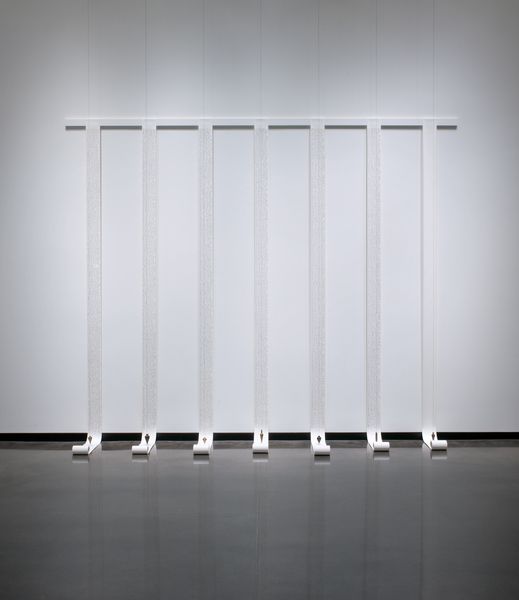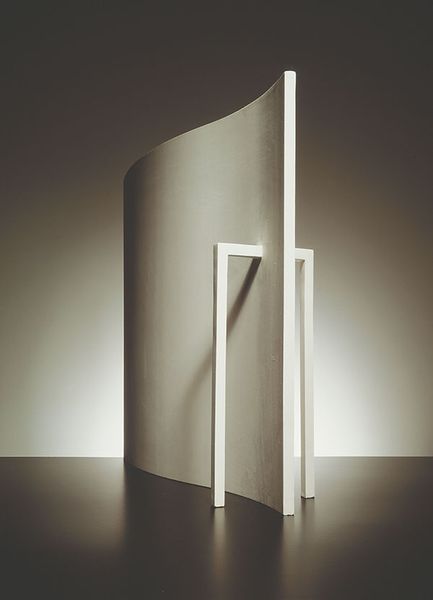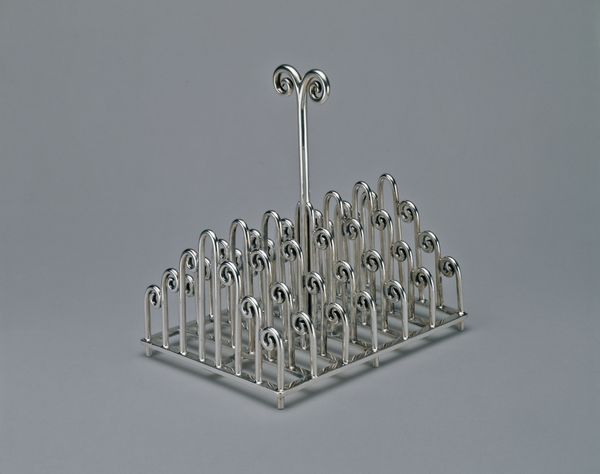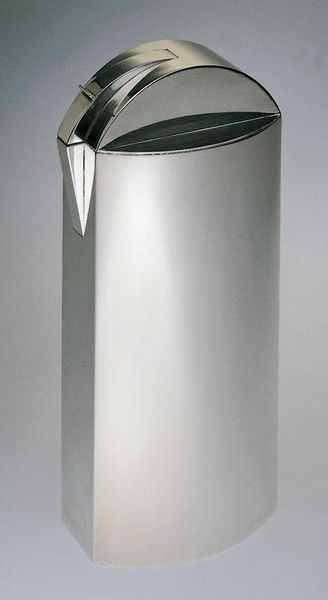
metal, sculpture
#
art-deco
#
clear graphic shape
#
3d model
#
3d printed part
#
metal
#
3d printing
#
plastic material rendering
#
virtual 3d design
#
sculptural image
#
3d shape
#
geometric
#
sculpture
#
white focal point
#
metallic object render
#
decorative-art
Dimensions: 21 x 8 x 9 1/2in. (53.3 x 20.3 x 24.1cm)
Copyright: No Known Copyright
Editor: Right now we're looking at "Candelabra," designed around 1930 by Karl Hagenauer. They’re metal sculptures, almost architectural in their geometry, and currently residing at the Minneapolis Institute of Art. What strikes me is their cold elegance – the gleaming metal and hard angles. What can you tell me about this piece? Curator: This candelabra embodies the spirit of Art Deco, a style deeply intertwined with social and political aspirations of the time. Art Deco sought to merge industry with artistry, creating functional objects that were also visually stunning. It's worth considering how the rise of consumer culture and mass production influenced designs like this, making luxury accessible. Editor: So it was about bringing beauty to everyday life, almost as a form of social uplift? Curator: Precisely. Think about the role of decorative arts within museums. By showcasing objects like this candelabra, institutions legitimize certain aesthetic values and reinforce ideas about good taste and design for the public. How might the context of a museum like the Minneapolis Institute of Art change our perception of a mass-producible object? Editor: That’s fascinating. Suddenly it shifts from being just a functional object to being a cultural artifact. Curator: Indeed. And the stark geometry challenges traditional notions of luxury, democratizing design to a certain extent. By appreciating its historical context, we begin to understand that even everyday objects can embody profound social and political meanings. Editor: This candelabra is far more thought-provoking than I initially imagined. Now, I am also seeing a statement of that time regarding aesthetics in everyday life. Curator: I agree. It's in these functional designs that we can appreciate a social context deeply.
Comments
minneapolisinstituteofart almost 2 years ago
⋮
In 1928, Karl Hagenauer became director of his father's firm and soon after his designs became increasingly sophisticated. As stylized tree-like forms, this set of candelabra is remarkably avant-garde for its time. The candle arms suggest branches jutting out and up at severe right angles. The overall angularity is softened by the tubular stems in which the intended candles become extensions. As installed, the positive elements and negative space play off one another providing an overall drawing-in-air composition.
Join the conversation
Join millions of artists and users on Artera today and experience the ultimate creative platform.
